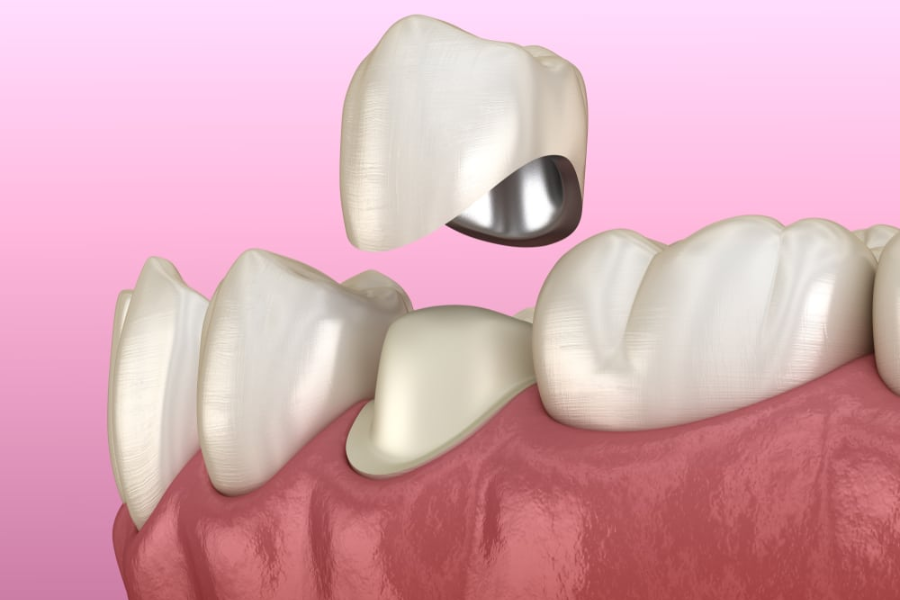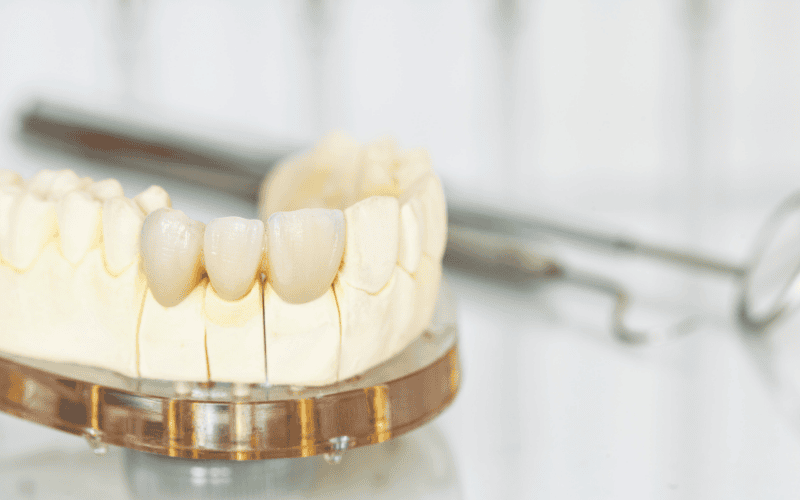
Dental crowns, a fundamental component in modern dentistry, offer both restorative and cosmetic solutions for a range of dental issues. A crown is essentially a custom-crafted cap to cover a damaged or decayed tooth, enhancing its strength, size, shape, and appearance. This article delves into the various types of dental crowns available, each with its unique properties. It explores their durability, providing valuable insights for anyone considering this form of dental treatment.
The Essence of Dental Crowns
Dental crowns are more than just a cosmetic fix; they play a critical role in restoring a tooth’s functionality. Whether it’s due to decay, damage, or aesthetic reasons, crowns serve as a protective cover, reinforcing the tooth’s structure. They are particularly vital in cases where a tooth is too damaged for a simple filling or following a root canal treatment, where the tooth becomes more fragile.
Diverse Types of Dental Crowns
Diverse Types of Dental Crowns refers to the various materials used in the fabrication of dental crowns, each offering unique benefits and suited for different dental needs. Here’s a brief overview of the most common types:
- Porcelain or Ceramic Crowns: These are highly popular due to their natural appearance. They can be precisely color-matched to the adjacent teeth, making them an excellent choice for front teeth restorations. Porcelain or ceramic crowns are ideal for patients seeking a crown that blends seamlessly with their natural teeth.
- Gold and Metal Alloy Crowns: Known for their durability, these crowns are made from gold, palladium, nickel, or chromium alloys. They are strong and resist wear and tear, making them suitable for back teeth where the chewing pressure is high. Their metallic color is the main drawback, making them less desirable for visible teeth.
- Porcelain Fused to Metal (PFM) Crowns: These crowns combine a metal base with a porcelain exterior. They provide both the strength of metal and the aesthetic appeal of porcelain. However, over time, the metal lining at the gum line may become visible, and the porcelain part can chip off.
- Zirconia Crowns: Zirconia is a relatively new material that is both strong and aesthetically pleasing. These crowns are suitable for any position in the mouth, offering a good balance between the aesthetic quality of porcelain and the strength of metal.
- Resin Crowns: These are the most cost-effective option but are less durable compared to other types. Resin crowns are more prone to wear and fractures, making them a less ideal choice for long-term use.
Each type of dental crown has its specific indications based on the patient’s dental condition, aesthetic requirements, and budget considerations. The choice of crown material is a critical decision made by the dentist in consultation with the patient, taking into account the functional and aesthetic needs of the individual.
Evaluating the Durability of Crown Materials
The lifespan of a dental crown varies significantly depending on the material:
- Porcelain or Ceramic Crowns: Generally, these can last between 5 to 15 years, but with excellent dental care, their lifespan can extend beyond that. Their vulnerability lies in their susceptibility to chipping, especially under heavy bite forces.
- Gold and Metal Alloys: These can easily surpass 20 years of use, with many lasting a lifetime with proper care. Their resilience makes them a preferred long-term solution for molars.
- Porcelain Fused to Metal: Offering a lifespan of about 10 to 15 years, these crowns combine aesthetic and functional benefits. The metal base adds to their strength, while the porcelain top provides a natural look.
- Zirconia Crowns: Known for their excellent durability, zirconia crowns can last more than 20 years. They resist cracking and chipping, making them suitable for both front and back teeth.
- Resin Crowns: Typically, these crowns are expected to last around five years. They are less robust and more susceptible to fractures and wear.
Caring for Your Dental Crowns
Caring for Your Dental Crowns involves a set of practices and habits aimed at maintaining the integrity, appearance, and longevity of dental crowns. Proper care not only extends the life of the crowns but also helps preserve the underlying natural tooth and overall oral health. Here are the key aspects of dental crown care:
- Regular Oral Hygiene: Just like natural teeth, crowned teeth require diligent care. This includes brushing twice a day and flossing daily. Special attention should be given to the area where the crown meets the gum line, as plaque tends to accumulate here. Using a soft-bristled toothbrush and non-abrasive toothpaste can prevent scratching or damaging the crown’s surface.
- Flossing Technique: When flossing around a crown, it’s important to be gentle to avoid dislodging it. Slide the floss out rather than lifting it out when cleaning between the crowned tooth and adjacent teeth.
- Avoiding Hard and Sticky Foods: Hard foods can potentially crack or chip porcelain and ceramic crowns. Sticky foods, on the other hand, can pull at the crown, risking dislodgement. It’s advisable to be cautious with foods like hard candies, ice, and sticky candies.
- Wearing a Mouthguard if Necessary: If you grind your teeth at night (bruxism) or participate in contact sports, wearing a mouthguard can protect your crowns from excessive forces that could cause damage.
- Regular Dental Check-Ups: Routine dental visits are crucial for the longevity of dental crowns. During these visits, the dentist checks the condition of the crowns, ensuring they are secure and free from decay. These check-ups also involve professional cleaning, which helps maintain both the health of the crowned tooth and surrounding gums.
- Avoiding Harmful Habits: Avoid using your teeth as tools to open packages or bite nails, as these habits can damage the crown.
By adhering to these care guidelines, the risk of crown-related problems can be minimized, ensuring that your dental crowns remain functional and aesthetically pleasing for as long as possible.
Conclusion
Dental crowns are a versatile and vital component of dental health, significantly improving the quality of life for those with dental issues. Understanding the different types of crowns, their specific applications, and the importance of their care is essential for anyone considering this dental procedure. Regular dental visits and good oral hygiene practices are key to maximizing the lifespan of these restorations, whether they are used independently or in conjunction with dental implants. With the right choice and care, dental crowns can provide long-lasting solutions, enhancing both dental function and aesthetics.




